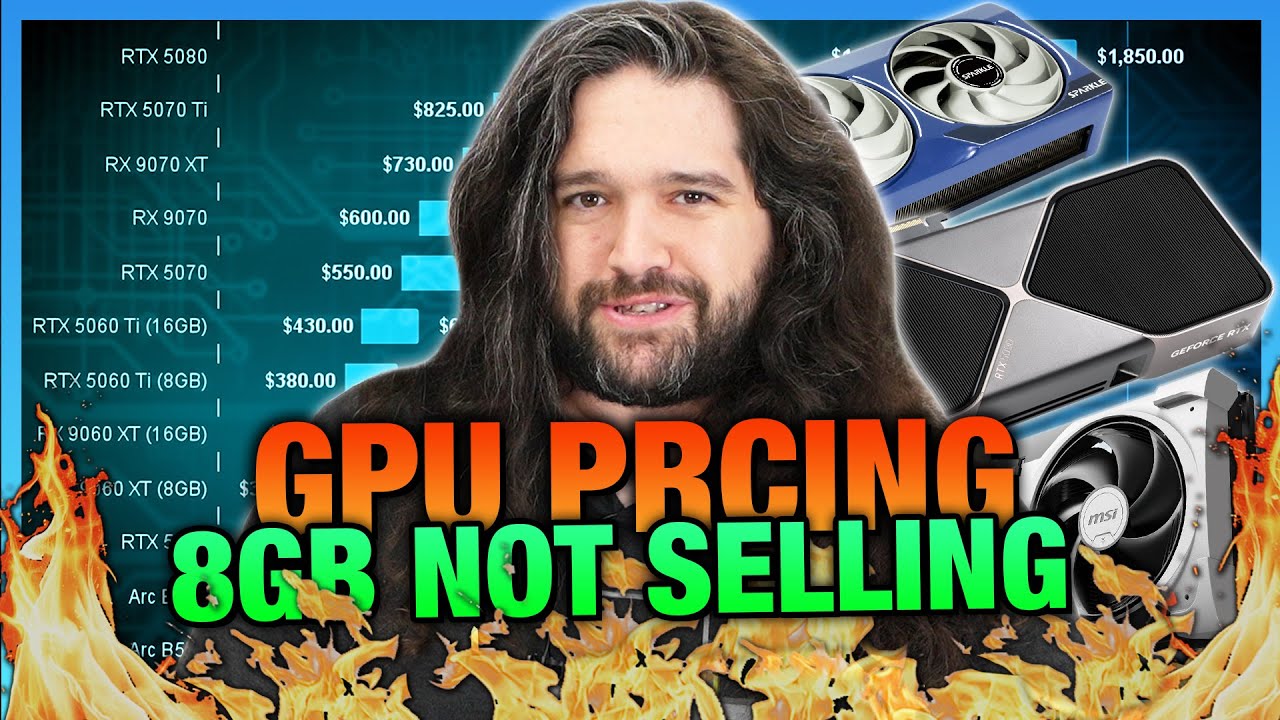The video reveals that 8GB GPUs, especially models like the Nvidia 5060 Ti and AMD 960 XT, are widely available near MSRP but suffer from poor sales due to low performance and consumer avoidance, while overall GPU prices remain significantly inflated above MSRP due to limited production and Nvidia’s dominant 92% market share. This market dynamic, compounded by scarce competition and deliberate supply restrictions by manufacturers, has rendered MSRP an unreliable price indicator and created a challenging environment for buyers seeking reasonably priced, high-value GPUs.
The video dives deep into the current state of the GPU market by analyzing over 450 GPU listings from major retailers like Newegg, Amazon, and Best Buy. The key takeaway is that many GPUs, especially 8GB models, are not selling well, and prices remain significantly above MSRP. For example, high-end cards like the Nvidia RTX 5090 and 5080 are marked up by hundreds of dollars, with the RTX 5090 averaging a 50% increase over its baseline price. Despite some AMD RX 970 XT models seeing price increases since launch, many GPUs have no listings at MSRP, and those that do restock quickly, raising questions about actual production volumes.
The video also highlights conversations with board partners and system integrators, revealing that many manufacturers deliberately limit the production of MSRP-priced cards due to low profit margins. Some companies ship just enough to maintain the appearance of MSRP availability to appease Nvidia, which dominates the market. This dynamic contributes to the inflated prices and scarce availability of reasonably priced GPUs, especially at the lower and mid-tier segments. The AMD and Intel presence remains limited compared to Nvidia’s overwhelming market share of 92% to 8%, which is reflected in the number of SKUs and listings available.
A significant focus is placed on the 8GB GPUs, particularly the Nvidia 5060 Ti 8GB and AMD 960 XT 8GB, which are widely available near MSRP but are considered poor-performing cards that consumers largely avoid. These GPUs are viewed as products designed to deceive pre-built system buyers rather than offer real value. The video stresses that MSRP has lost its meaning as a reliable price indicator, with many cards priced well above their suggested retail price, making it difficult for consumers to gauge true value or make informed purchasing decisions.
The analysis also covers the disparity in pricing and availability among different Nvidia AIB partners, with Gigabyte offering the most listings and ASUS holding the highest average prices on several models. The video notes that the high-end GPU market is dominated almost entirely by Nvidia, with AMD and Intel failing to present competitive alternatives, allowing Nvidia to charge premium prices without significant pushback. This lack of competition exacerbates the price inflation and limits consumer choice in the high-end segment.
In conclusion, the video underscores the ongoing instability and complexity of the GPU market, where MSRP is increasingly irrelevant, and availability is skewed heavily toward overpriced and less desirable models. It calls attention to the need for continued monitoring and analysis as prices and stock fluctuate. The current market situation reflects a combination of limited MSRP production, dominant Nvidia market share, and a lack of competitive pressure, all contributing to a challenging environment for GPU buyers.
